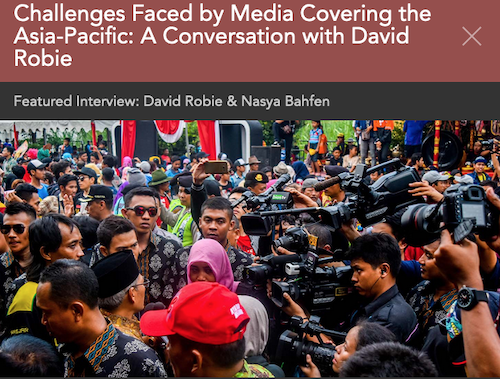New Zealand journalist and academic David Robie has covered the Asia-Pacific region for international media for more than four decades.
An advocate for media freedom in the Pacific region, he is the author of several books on South Pacific media and politics, including an account of the French bombing of the Greenpeace flagship Rainbow Warrior in Auckland Harbour in 1985 — which took place while he was on the last voyage.
In 1994 he founded the journal Pacific Journalism Review examining media issues and communication in the South Pacific, Asia-Pacific, Australia and New Zealand.
- READ MORE: Other presentations at the Mediasia conference in Kyoto, Japan
- The Bearing Witness project

He was also convenor of the Pacific Media Watch media freedom collective, which collaborates with Reporters Without Borders in Paris, France.
Until he retired at Auckland University of Technology in 2020 as that university’s first professor in journalism and founder of the Pacific Media Centre, Dr Robie organised many student projects in the South Pacific such as the Bearing Witness climate action programme.
He currently edits Asia Pacific Report and is one of the founders of the new Aotearoa New Zealand-based NGO Asia Pacific Media Network.
In this interview conducted by Mediasia organising committee member Dr Nasya Bahfen of La Trobe University for this week’s 13th International Asian Conference on Media, Communication and Film that ended today in Kyoto, Japan, Professor Robie discusses a surge of disinformation and the challenges it posed for journalists in the region as they covered the covid-19 pandemic alongside a parallel “infodemic” of fake news and hoaxes.
He also explores the global climate emergency and the disproportionate impact it is having on the Asia-Pacific.
Paying a tribute to Pacific to the dedication and courage of Pacific journalists, he says with a chuckle: “All Pacific journalists are climate journalists — they live with it every day.”
